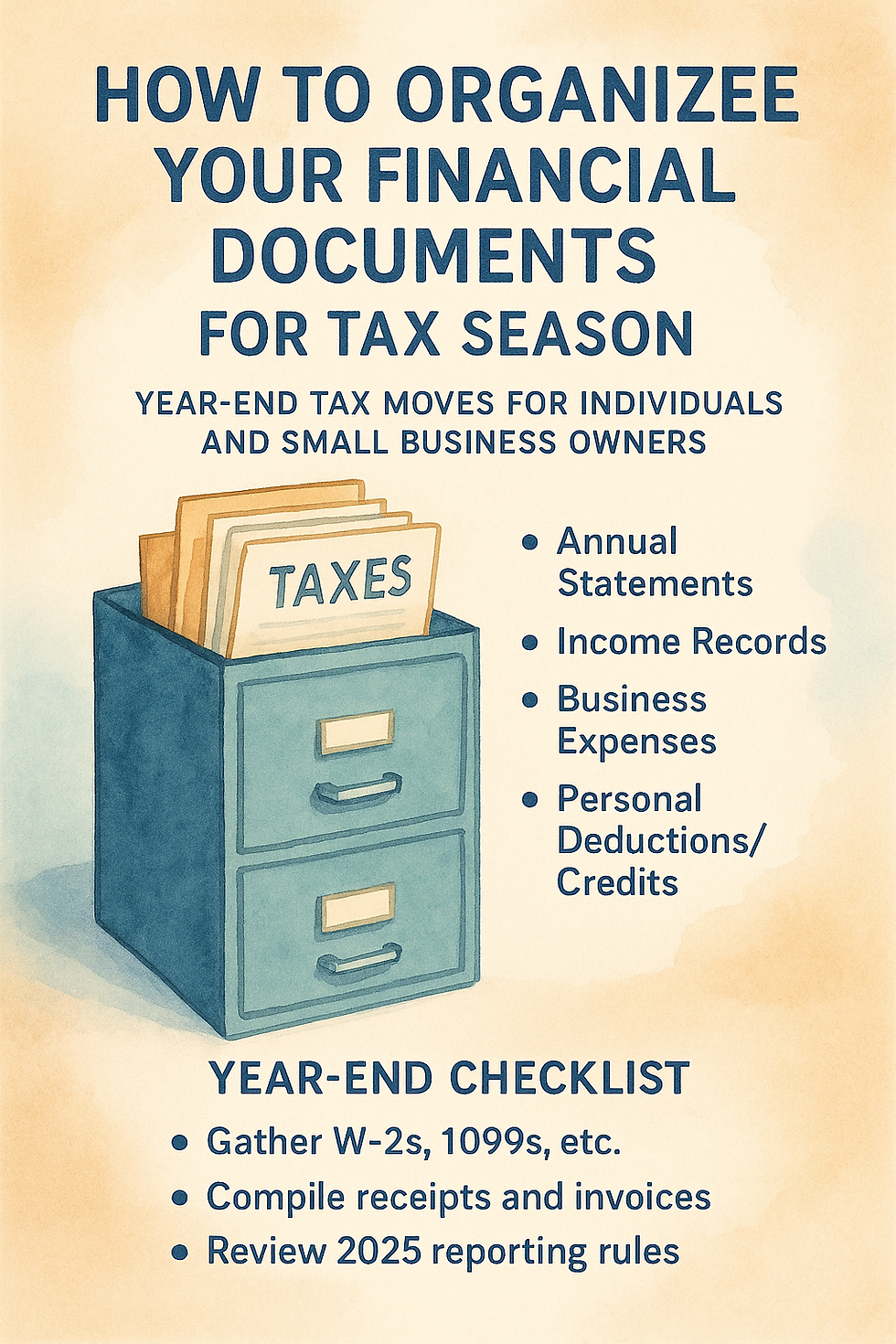Understanding Required Minimum Distributions (RMDs) in 2025
- Gloria

- Feb 11
- 3 min read

If you have a tax-advantaged retirement account, such as a traditional IRA or 401(k), you may need to start taking Required Minimum Distributions (RMDs) once you reach a certain age. These mandatory withdrawals ensure that retirement savings, which have grown tax-deferred, eventually become taxable income. Understanding how RMDs work—and how recent changes may affect you—is essential for effective retirement planning.
What Are Required Minimum Distributions?
RMDs are the minimum amounts that retirement account holders must withdraw annually once they reach a specific age. The amount of your RMD is determined by dividing your account balance as of December 31 of the previous year by a life expectancy factor provided by the IRS.
Failing to take the required distribution can lead to significant penalties. As of 2025, the penalty for missing required minimum distributions
is 25% of the amount that should have been withdrawn (down from 50% in previous years), and if corrected in a timely manner, it may be reduced to 10%.
Recent Changes to Required Minimum Distributions for 2025
The landscape of RMDs has evolved significantly due to legislative changes, primarily through the SECURE 2.0 Act, which introduced the following key updates:
Increased RMD Starting Age
If you were born in 1960 or later, your RMD age is now 75 (up from 72 under prior rules).
If you were born between 1951 and 1959, your RMD age is 73.
Reduced Penalties for Missing an RMD
As noted earlier, the penalty has been reduced to 25%, with the possibility of lowering it to 10% if corrected within a specific timeframe.
Roth 401(k) RMD Requirement Eliminated
Beginning in 2024, Roth 401(k) accounts are no longer subject to RMDs during the account holder’s lifetime, aligning with Roth IRAs.
More Flexible RMD Calculations
The IRS periodically updates life expectancy tables, which may slightly lower the annual RMD amounts, allowing for greater tax efficiency.
Required Minimum Distribution Calculations and Account Selection

Let’s say you turn 75 in 2025 and have a traditional IRA with a balance of $500,000 as of December 31, 2024. According to IRS life expectancy tables, your distribution period might be 24.6 years. Your RMD calculation would be:
RMD = $500,000 / 24.6 = $20,325.20
This means you must withdraw at least $20,325 in 2025 to satisfy your RMD requirement.
It’s important to note that custodians of retirement accounts, such as brokers and financial institutions, are required to calculate and provide your RMD amount each year based on the accounts they manage. If you have multiple retirement accounts, you must add together the RMDs for all of them. While you don’t have to take an RMD from each individual account, you must withdraw the total required amount from one or more of your accounts to meet the overall obligation.
Planning Ahead for Required Minimum Distributions
To minimize tax impacts and ensure compliance:
Consider Qualified Charitable Distributions (QCDs): If you're charitably inclined, you can donate up to $100,000 annually directly from your IRA to a qualified charity, satisfying part or all of your RMD while avoiding income tax on the withdrawal.
Plan for Tax Efficiency: Since RMDs are taxed as ordinary income, withdrawing strategically over multiple years can help manage your tax bracket.
Work With a Financial Advisor: Given the complexities of RMD rules, consulting with a tax or financial professional can help optimize your withdrawal strategy.
Final Thoughts
The rules surrounding RMDs are evolving, and understanding these changes can help you make informed decisions about your retirement income strategy. With the SECURE 2.0 Act extending the RMD age and reducing penalties, retirees now have more flexibility in managing their distributions. By planning ahead, you can avoid unnecessary taxes and penalties while making the most of your retirement savings.
If you have questions about how RMDs impact your financial plan, reach out for personalized guidance!
The information provided in this blog is for general informational purposes only and is not intended to be comprehensive or serve as professional advice. Every business and financial situation is unique. I encourage you to consult with a qualified professional to address your specific needs and circumstances.





Comments